 00:14:00
00:14:00
The Enlightenment is Under Threat and Lindau Alumni for Humanitarian Action (LAHA) Can Save It
Kant, in possibly his most celebrated essay, defined the Enlightenment as: Man’s emergence from his self-imposed period of immaturity. This immaturity is the inability to use one's own understanding without another's guidance. Without the freedom t....
More details | Watch now 00:35:00
00:35:00
Ideas Come from Many Places
Come share with me the memories of where ideas have come from during my life - from childhood to old age. You may find it helpful in encouraging your own brains to come up with new ideas. They won't all be useful - as I have found in this case of min....
More details | Watch now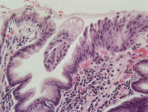 00:44:00
00:44:00
The Discovery of Helicobacter
Before the 1970s, well fixed specimens of gastric mucosa were rare. Then the flexible endoscope was introduced. This enabled gastroenterologists to take numerous well-fixed small biopsies from the stomach. Gastric histology and pathology were clearly....
More details | Watch now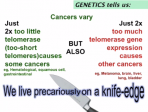 00:35:00
00:35:00
Telomeres: Telling Tails
Telomeres protect chromosome ends and help stabilize the genome. Throughout human life and in aging, telomeres often erode down, eventually causing cells to malfunction or die. The highly regulated cellular enzyme telomerase adds telomeric DNA to tel....
More details | Watch now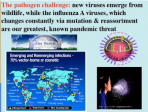 00:29:00
00:29:00
The Killer Defence
Immune surveillance by virus-specific CD8+ cytotoxic T lymphocytes (CTLs), or killer T cells, has long been known to be central to the control of acute infections and some cancers, though the role of CTL memory in the rapid recall of immune protectio....
More details | Watch now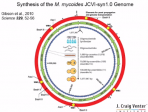 00:31:00
00:31:00
Minimizing a Bacterial Genome by Global Design and Synthesis
In 2010, we chemically synthesized the 1078 Kb Mycoplasma mycoides genome and transplanted it into a recipient cell cytoplasm to create a 'synthetic cell', JCVI-syn1.0 (Science, 329, 52-56, 2010). We identified several hundred non-essential genes by ....
More details | Watch now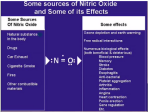 00:39:00
00:39:00
Role of Nitric Oxide and Cyclic GMP in Cell Signaling and Drug Development
Nitric oxide research has grown rapidly with about 150,000 research publications describing its biological effects. It is an important messenger molecule that affects most tissues and biological processes. Many effects of nitric oxide are mediated by....
More details | Watch now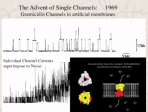 00:30:00
00:30:00
Ion Channels: Their Discovery, their Function and their Role in Diseases
The concept of bioelectricity emerged in the late 18th century, based on the experiments of Galvani and Volta. Sixty years ago, Hodgkin and Huxley showed that the nerve impulse is a result of permeability changes of the nerve membrane. This raised th....
More details | Watch now 00:31:00
00:31:00
The Origins of Cellular Life
The complexity of modern biological life has long made it difficult to understand how life could emerge spontaneously from the chemistry of the early earth. We are attempting to synthesize simple artificial cells in order to discover plausible pathwa....
More details | Watch now 00:30:00
00:30:00
The Origin of Reversible Protein Phosphorylation as a Regulatory Mechanism
Reversible protein phosphorylation can be considered one of the most prevalent mechanism by which eukaryotic cellular events are regulated. It is directly involved in numerous pathological conditions, and bacterial and viral diseases. This process wa....
More details | Watch now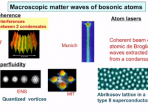 00:31:00
00:31:00
The Adventure of Cold Atoms. From Optical Pumping to Quantum Gases
Conservation laws are very important in quantum physics. Two examples of applications will be given. First, optical pumping which uses transfer of angular momentum from polarized photons to atoms to produce highly polarized atomic gases. Then, laser ....
More details | Watch now 00:27:00
00:27:00
A Crime against Humanity
When Monsanto first tried to introduce GMO seeds into Europe there was a backlash by the Green parties and their political allies, who feared that American agro-business was about to take over their food supply. Thus began a massive campaign not agai....
More details | Watch now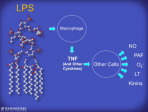 00:31:00
00:31:00
Finding Mutations that Affect Immunity
Beginning with an exception to normal function caused by a genetic aberration, one may hope to find at least one protein with non-redundant function in a certain biological process. This approach permitted the identification of the receptor for bacte....
More details | Watch now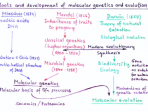 00:34:00
00:34:00
Insight into the Laws of Nature for Biological Evolution
Both evolutionary biology and genetics have their roots 150 years ago in work with phenotypic variants of plants and animals. In contrast, microbial genetics originating as recently as the 1940s, rapidly revealed that filamentous DNA molecules are th....
More details | Watch now 00:29:00
00:29:00
From Proto-oncogenes to Precision Oncology
The diagnosis, classification, and treatment of human cancers are being transformed by scientific discoveries that were strongly influenced by the discovery of the c-src proto-oncogene, as described in the lecture by Michael Bishop. The path to this ....
More details | Watch now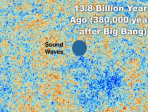 00:33:00
00:33:00
The State of the Universe
Our Universe was created in 'The Big Bang' and has been expanding ever since. Brian Schmidt describe the vital statistics of the Universe, including its size, weight, shape, age, and composition. He also tries to make sense of the Universe's past, pr....
More details | Watch now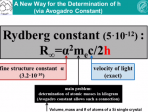 00:29:00
00:29:00
A New Kilogram in 2018: The Biggest Revolution in Metrology Since the French Revolution
Metrology - the science of measurements - is responsible for the international uniformity and precision in standards. Today, the seven units for meter, kilogram, second, ampere, kelvin, mole, and candela of our international system of units (SI units....
More details | Watch now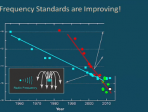 00:33:00
00:33:00
What About Redefining Time Using a Stable Laser?
Several laser-based Atomic Clocks now have an accuracy potential of ~2 x10-18, a hundred-fold better than the best achieved after more than 60 years' experience with rf resonances in Cs atoms. Still, this long attention span documents that the Cs Fou....
More details | Watch now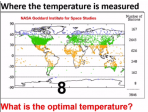 00:30:00
00:30:00
Global Warming Revisited
Because of the following statement from the American Physical Society: “The evidence is incontrovertible: Global warming is occurring. If no mitigating actions are taken, significant disruptions in the Earth's physical and ecological systems, s....
More details | Watch now 00:31:00
00:31:00
Cosmic Microwave Background Radiation and its Role in Cosmology
In the first half of the 20th century other galaxies were recognized, their red shift measured and theories of the whole universe were developed. They included Big Bang and Steady State. Arno Penzias and I found the Cosmic Microwave Radiation (CMB) i....
More details | Watch now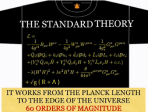 00:44:00
00:44:00
The Future of Particle Physics
Elementary Particle Physics seeks to discover the basic constituents of matter and understand the fundamental forces that act on them. In this lecture I shall review the current state of particle physics, the grand success of the ñstandard modelî, ....
More details | Watch now 00:35:00
00:35:00
A Random Walk in Science
I will discuss my random walk in science, from my graduate student on postdoctoral years testing the Weinberg-Salam-Glashow theory of electro-weak forces, and then to energy transfer in condensed matter systems, the spectroscopy of positronium, laser....
More details | Watch now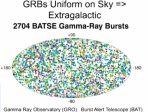 00:30:00
00:30:00
Gamma Ray Bursts: Windows on the Universe
Gamma-Ray Bursts are the most powerful explosions in the universe. They happen about once per day in the visible universe. Their fantastic engines pump out as much energy in a matter of seconds as all the stars in a galaxy do in a billion years. This....
More details | Watch now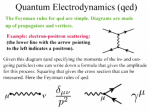 00:37:00
00:37:00
Discovery of the Higgs Particle
Recently the Higgs particle has been discovered at CERN. This particle was theoretically predicted. The historical development of field theory, leading to this prediction will be discussed.
More details | Watch now 00:29:00
00:29:00
Future Accelerators for Astro-Particle Physics
One of the most remarkable results of astro-particle Physics has been the success of the Standard Model, recently culminated in the discovery of the Higgs particle (Ho). However, the Ho is observable only in few channels at the LHC, in the presence o....
More details | Watch now 00:35:00
00:35:00
The International Year of Light: Celebrating Fifty Years of Laser Revolution in Physics
The year 2015 has been named the International Year of Light, to mark milestones in the science of light which occurred 1000, 200, 150, 100 and 50 years go. I was a young student in physics in 1965, when the cosmic radiation background was discovered....
More details | Watch now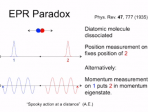 00:39:00
00:39:00
Light Quanta and Their Idiosyncrasies
Maxwell's electromagnetic theory (now 150 years old) seemed in its comprehensive way to be capable of answering all of the questions one might ever pose about the theory of light. But that spell was broken in 1900 by Planck's discovery that light bea....
More details | Watch now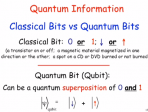 00:31:00
00:31:00
Quantum Information: a Scientific and Technological Revolution for the 21st Century
Two of the great scientific and technical revolutions of the 20th century were the discovery of the quantum nature of the submicroscopic world, and the advent of information science and engineering. Both of these have had a profound effect not only o....
More details | Watch now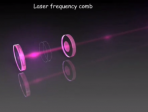 00:35:00
00:35:00
Science with Combs of Light
The spectrum of a frequency comb, commonly generated by a mode-locked femtosecond laser, consists of several hundred thousand precisely evenly spaced spectral lines. Such laser frequency combs have revolutionized the art of measuring the frequency of....
More details | Watch now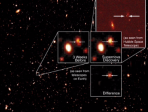 00:33:00
00:33:00
What We Learn When We Learn that the Universe is Accelerating
The 1998 discovery that the universe's expansion is accelerating was not only unexpected, but it also led to the postulation of a previously-unknown 'dark energy' forming almost three-quarters of the "stuff" of the universe. How was this discovery ma....
More details | Watch now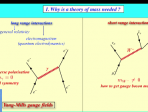 00:33:00
00:33:00
The Origin of Elementary Particle Masses
In the beginning of the 60s, the laws of classical general relativity, Einstein's generalisation of Newtonian gravity, and of quantum electrodynamics, the quantum version of Maxwell's electromagnetic theory, were known. These laws describe long range....
More details | Watch now 00:33:00
00:33:00
Nanoscopy – allowing molecules to be examined inside living cells
Eric Betzig shared the 2014 Chemistry Nobel prize with fellow American William E. Moerner and Romanian-German Stefan W. Hell for revolutionising science through the development of super-resolved fluorescence to exceed the accepted limits of tradition....
More details | Watch now 00:30:00
00:30:00
The Hunt May Be Up for the Carrier of the Diffuse Interstellar Bands and other stories
The development of radio telescopes has revolutionized our understanding of the molecular constitution of the interstellar medium ISM. A recent surprise that the element carbon had up its sleeve was the existence of C60, Buckminsterfullerene, the thi....
More details | Watch now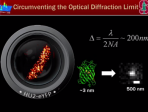 00:32:00
00:32:00
Fun with Light and Single Molecules
More than 25 years ago, single molecules were first detected optically, but how do we really detect a single molecule today, and what good is it? It is an amazing fact that you can even detect single molecules with your own eyes. When a new regime of....
More details | Watch now 00:32:00
00:32:00
Tickling Worms – Surprises from Basic Research
Research, at least my research, has never been linear. I have found that my lab and I often double back on problems after years of inactivity or go off in entirely new directions as dictated by the work and people's interests This lack of direction r....
More details | Watch now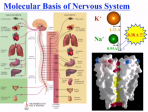 00:29:00
00:29:00
How to Model the Action of Complex Biological Systems on a Molecular Level
Despite the enormous advances in structural studies of biological systems we are frequently left without a clear structure function correlation and cannot fully describe how different systems actually work. This introduces a major challenge for compu....
More details | Watch now 00:29:00
00:29:00
Electron Transfer Theory in Single Molecule Studies of Intermittent Fluorescence of Quantum Dots and in Initial Steps in Dye Sensitized Solar Cells
Intermittently fluorescing single molecule systems are found in many materials, including semiconductor quantum dots (QD), dyes on crystalline or nanoparticle film surfaces, and biological systems. The QD's show a ~ -3/2 power law for the distributio....
More details | Watch now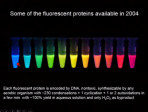 00:33:00
00:33:00
Molecules Against Cancer or for Long-Term Memory Storage
For cancer diagnosis and therapy, we are developing activatable cell penetrating peptides (ACPPs), synthetic molecules with a novel amplifying mechanism for homing to diseased tissues. ACPPs are polycationic cell penetrating peptides whose cellular u....
More details | Watch now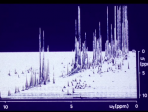 00:26:00
00:26:00
NMR in Biology, Chemistry and Medicine
For the discovery of the physics phenomenon of nuclear magnetic resonance (NMR), Felix Bloch and Edward Purcell were awarded the Nobel Prize in Physics in 1952. NMR has then been used in a wide range of fundamental studies in physics, and in the 1960....
More details | Watch now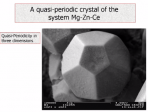 00:30:00
00:30:00
Quasi-Periodic Crystals
Quasicrystals - or, as Shechtman would prefer, quasi-periodic materials - now have scientists thinking about matter in a new light, but they also have many possible practical applications. Because of their uneven structure, quasicrystals do not have ....
More details | Watch now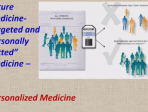 00:29:00
00:29:00
Are We Going to Cure all Diseases and at What Price?
We are exiting the era where our approach to treatment of these and many other diseases is 'one size fits all', and enter a new era of 'personalized medicine' where we shall tailor the treatment according to the patient's molecular/mutational profile....
More details | Watch now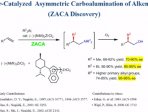 00:35:00
00:35:00
How to Synthesize a Wide Variety of Optically Active Compounds with >99% Optical Purity
The discovery and synthetic applications of a widely applicable and highly enantioselective (>99% ee) protocol consisting of the 'ZACA reaction' (Zr-catalyzed asymmetric carboalumination of alkenes), purification of the ZACA-products by lipase-cat....
More details | Watch now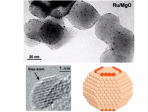 00:31:00
00:31:00
Catalysis at Surfaces: From Atoms to Complexity
This lecture addresses the question if spatio-temporal self-organisation of matter which is so characteristic for living systems can also be verified with a simple inorganic reaction in which the observed phenomena of complexity can be traced back to....
More details | Watch now 00:27:00
00:27:00
Roles of the Ubiquitin System in Health and Disease
The selective degradation of many short-lived proteins in eukaryotic cells is carried out by the ubiquitin-mediated proteolytic system. In this pathway, proteins are targeted for degradation by covalent ligation to ubiquitin, a highly conserved small....
More details | Watch now 00:31:00
00:31:00
Structural Aspects of Protease Control in Health and Disease
This lecture starts out with a very brief review of the history of protein crystallography and continue with our studies since 1970 on proteolytic enzymes and their control. Proteolytic enzymes catalyse a very simple chemical reaction, the hydrolytic....
More details | Watch now 00:31:00
00:31:00
Where am I From? Where Are You Going?
Scientific research is a never-ending 'journey of knowledge'. There is more meaning in experiencing various encounters and making a good journey itself than reaching the destination. Basic science has eternal cultural value; it has served to heighten....
More details | Watch now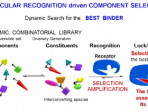 00:33:00
00:33:00
Towards Adaptive Chemistry
Molecular chemistry implementing reversible chemical bonds between atoms in molecules, as well as supramolecular chemistry, whose molecular components are held together by intermolecular interactions, are able to undergo a continuous change in consti....
More details | Watch now 00:32:00
00:32:00
Aquaporin Water Channels – From Atomic Structure to Malaria
Aquaporin channels allow water to rapidly cross cell membranes in all living organisms. AQP1 confers red cells and proximal renal tubules with high water permeability. Present in renal collecting duct, AQP2 is regulated by vasopressin, and human muta....
More details | Watch now
